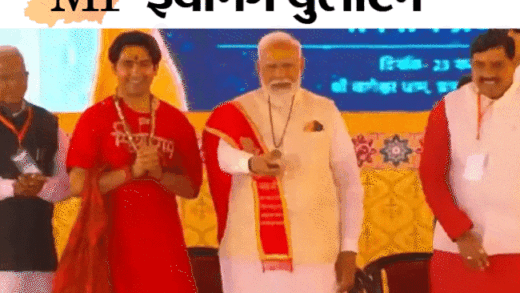This article is part of the US-China Dynamics series, edited by Muqtedar Khan, Jiwon Nam and Amara Galileo.
The rise of China and the US response to it is probably the most important issue of our times from the perspective of global politics. In this collection of articles, we plan to make a modest contribution to the broad question of whether there will be competition or conflict between the existing hegemon and the rising challenger by looking at how they are dealing with each other in different issue areas and in different regions. We look at US-China relations with regards to leadership on issues of migration, climate change, investments and global order, in Africa, the Middle East, and Europe. The key contribution of this series is to look at critical issues and regions in the context of US-China dynamics. Special attention will be given to US grand strategy and the possibility of shared hegemony. Scholars such as Schweiss (2003) have advanced the idea of shared hegemony by US and Europe who are already allies. Extending that idea we ask can there be a shared hegemony rather than a bipolar contest between US and China? Can the US and China be geopolitical and economic competitors yet jointly take responsibility for maintaining a global order that benefits all and work together to address planetary challenges such as climate change?
The Russian invasion of Ukraine in 2022 has become a proxy war between Russia and the West. The former challenged Western-backed order by annexing parts of Ukraine and the latter defending it by arming and funding Ukraine. Russia continues to receive help from China which has ramped up its imports from Russia that keeps its economy afloat and allows it to fund its war efforts despite sanctions and decoupling by Western economies. Ukraine has become the battleground where the current order is being contested and China clearly is playing on both sides – it is doing little to defend the current order but it is also not doing anything directly through military means to undermine it.
At the time this introduction was being penned the US has been dragged into another theater where Western hegemony is being challenged, this time by a nonstate actor – Hamas. The US appears to be committed to arm, support and even fund a long military campaign by Israel which in the eyes of many is violating international laws and norms in its war against Hamas. Israel’s response also violates the core rules of the “rule-based order” that the US is defending in the Russia-Ukraine war. In this war China is not directly helping the other side but the deliberations in the UN Security Council during October of 2023 highlights the polarization of the World in two parts, the West and the rest and China is always in the other camp. In the East Asian region too, China and the US maintain adversarial military postures with regards to Taiwan. While many China hawks in the West anticipate a hot war, East Asia, for the moment, remains more at peace than Europe and the Middle East.
President Biden has acknowledged that there are geopolitical and geoeconomics tensions with China, but that there is no conflict nor a cold war like situation between the two superpowers. The Biden mantra is simple – “we seek competition not conflict” as said in his 2023 State of the Union address. He repeated this after his summit meeting with Chinese President Xi Jinping, adding that America wished to cooperate with China when global issues were at stake, such as dealing with pandemics and fighting climate change. China on the other hand sees the US as both undermining the one-China policy by arming and integrating Taiwan in the global system as an independent country. China still sees Taiwan as a province and hopes to integrate it as it did with Hong Kong. China is also wary of US interference in its domestic matters (such as the Uyghur issue) and US sanctions and geopolitical efforts to hinder its economic development. Chinese leaders talk like a developing nation seeking only to maintain sovereign independence from Western colonialism and imperialism and focused on economic development of their country, but their defense investments and military and geostrategic behaviors suggests that they are thinking like a counter hegemonic, even an expansionist power. China’s conduct triggers the security dilemma for many democratic nations in the Indo-Pacific region, specially, India, Australia, and Japan. The Belt and Road Initiative and its attendant so called debt diplomacy has also generated worries in Western capitals that China seeks to replace Western hegemony in the global south with an economic dependency which will allow China to dominate the global economic and resource horizon.
China’s impressive economic growth and military build-up not only threatens Western hegemony but also the international liberal order. The West fears that China’s rise will eventually lead to the emergence of a new global order that will skew international outcomes in China’s favor and help it cement its position as a global leader – and also perpetuate that domination. So, whatever we may call it – competition, or conflict – we are witnessing a contest where the ultimate prize is the prerogative to shape the global order. However, we would like to point out that there is a disjuncture between facts and strategic chatter. For example, there has been much discussion about how Russia’s war on Ukraine and the pandemic are triggering deglobalization and that US-China tensions may be leading to economic decoupling. But, figures show that in 2022 US-China trade set a record of $690 billion and US exports to China also reached an all-time high of $153 billion. These figures alone highlight the tremendous economic interdependence between US and China and underscore the need for the two countries to cooperate.
There are three key reasons that could compel the two superpowers to not just cooperate on various issues but also share sovereignty: (1) conflict will hurt both economies and the global economy thus rendering any gains from conflict pyrrhic; (2) China has benefitted from the existing global order and has in four decades gone from being a developing nation to a superpower which will soon have the biggest economy in the world. Why would it want to seek a different global order?; (3) The Russia-Ukraine war’s impact on the world economy causing food insecurity, supply chain disruptions, energy shortage and high inflations are a preview of what will happen at a much larger scale if the US and China clash and therefore the two nations might be inclined towards shared hegemony rather than a globally disruptive contest.
Article Summaries
In U.S.-China Power Struggle or Peaceful Coexistence: Will it Avoid the Thucydides Trap?, Mukherji explains how the rise of China in recent years has renewed interest in the concept of “Thucydides’ Trap” in the Western political system. The author notes that two key drivers of this dynamic are the rising power’s growing sense of entitlement and demand for greater say and sway, while the established power’s insecurity is heightened, strengthening its determination to defend the status quo. Graham Allison argues that the stress generated by this dynamic usually leads to conflict, Mukerji argues that, if the US and China have a mutual understanding with respect to their strengths and weaknesses in the global economy, shared hegemony could be possible.
In The Populist Potential of the US and its Fragile Grip on the International System, Aksu argues that Donald Trump’s administration in the US would have been less likely to establish and maintain the project of shared hegemony due to its populist characteristics in foreign policy, such as showing a less compromising attitude, refraining from multilateralism while supporting bilateralism, diversifying foreign relations and adopting foreign policy making attitudes such as centralization and personalization. Trump’s “America First” approach and disdain for both allies and multilateralism would preclude any hope of shared governance. The possibility of his return in 2024 would mean less cooperation with China.
In Coexisting Influence: The Sino-American Competition in Europe, Whyte argues that as the United States and China continue their competition for control of the international system into the mid-21st century, the relationship both superpowers have with a third powerful bloc, Europe, is likely to rise in importance. The established military and economic alliance between the US and Europe, dating back to the early-1900s has helped maintain American preeminence on the world stage since World War II (WWII). The US will likely look to the trans-Atlantic partnership to help stave off the increasing threat posed by China in any potential competition in Europe. China is increasing its share of international trade and growing production of key technologies. While the US maintains a significant advantage over China when it comes to military, economic and technological and governmental and norm influence in relation to Europe, the East Asian power is positioning itself for an increased relationship in the future.
In Russia’s Reaction to U.S.-China Competition in Central Asia, Khalilova explains that the US has historically lacked interest in Central Asia, in part due to its proximity to the hegemon’s rivals – Russia, China and Iran. Despite its Strategy for Central Asia 2019-2025, the author asserts that the US’s policy toward the region is ad hoc. Khalilova makes a case for increased attention to the Central Asian region, particularly for the purposes of maintaining its position of global leadership, and a clearer Central Asian strategy overall. Khalilova asserts that, although Central Asian nations feel threatened by the influence of external democratic actors, the US should increase its presence in the region, specifically through economic initiatives. China’s strengths in the region come from its economic relations, particularly facilitated by the BRI. Khalilova also considers the influence of Russia and its post-Soviet sphere of influence and, more specifically, Russia’s intolerance of the US operating in the region. Khalilova seems cautiously optimistic about the prospect of shared hegemony due to the multi-vector nature of Central Asian states’ foreign policy strategies. One area of a potential convergence of interests is counterterrorism in the region. Khalilova concludes by making several recommendations for the US to improve its relations with Central Asia, including wielding its soft power, working alongside the EU in the region and avoiding interfering in the internal affairs of these states.
In U.S.-Iran-China Nexus: Towards a New Strategic Alignment, Rātfelders explores the US-Iran-China triangle in the context of rising Chinese influence within the US-dominated hierarchical international system. Rātfelders provides policy recommendations the US should undertake to counter China’s challenge to its global leadership, by viewing the particular problem through the Middle Eastern and, more specifically, Persian Gulf and Iranian angles. Rātfelders argues that the restoration of the Joint Comprehensive Plan of Action (JCPOA) provides the best bet the US has for tackling China’s challenge to the US-dominated global hierarchy. However, its full restoration in the initial form is unlikely. The scaled-down version of the JCPOA should be pursued instead.
In US-China Rivalry and the Future of Africa, Galileo traces the history of US and Chinese engagement with the continent of Africa. She notes that increasing attention is being paid to this region in recent years, with nations such as Russia, Turkey and India expanding their relationships with key African players. Additionally, the US has prioritized Africa more in terms of policy initiatives under the Biden Administration. Historically, the US’s engagement on the continent ramped up following WWII and was primarily focused on economic and healthcare initiatives (e.g., the African Growth and Opportunity Act under Clinton presidency and the President’s Emergency Plan for AIDS Relief under the George W. Bush presidency). Sino-African relations were more far-reaching, dating back to the medieval period, but more recently have emphasized economic cooperation, most notably with the BRI. Galileo argues that dynamics of the future US-Africa-China nexus are uncertain. However, there are five key areas for potential cooperation: climate change, public health, fighting terrorism, promoting peace and security and building infrastructure. There are also three areas of influence that may prove areas of contention: the economic, culture, and political spheres.
In In Search of Food Security: US-China Hegemonic Rivalry in Africa, Amusan and Agunyai interrogate Africa’s role in providing global food security. Historically, China and America’s roles in Africa have been characterized by rivalry, especially as it relates to food security. Despite being labeled the food basket of the world, Africa is vulnerable to this hegemonic rivalry due to an overreliance on imported food. Amusan and Agunyai contest that China’s relationship with many African countries has largely been motivated by investment and profits rather than long-term, sustainable development of the continent. On the other hand, the US has taken advantage of Africa – particularly through the Bretton Woods institutions – to subordinate the continent as predominantly a supplier of raw materials at the behest of the US-dominated global capitalist system. The authors highlight select instances of China-US competitive engagements in Africa. Amusan and Agunyai apply agro-ecological theory, a theory related to social constructivism, to promote a solution to food security that involves collaboration between scientific and traditional knowledge. In the end, the authors propose cooperation between China and the US with regard to supporting the achievement of the UN’s Sustainable Development Goals (SDGs) — especially SDGs 1, 2, 14, and 15 — in Africa.
In US-China Competition in the Andean Region, Vidarte and Quichua posit that the presence of China in Latin America has been increasing in the last decade, to the detriment of traditional US influence. But when one thinks of Latin America from outside the region, they seem to be faced with a group of homogeneous countries, with similar languages, culture and history. However, despite the links that unite them, the interests of Mexico and Central American countries, closely linked to the United States, differ from South America’s priorities. With the increasing influence of China and existing interests from the US, both countries are interested in projecting influence in the Andean region. The article examines the competition between the two countries regarding economic, technological, political and military matters. Although competition between China and the United States is real, this does not reach alarming levels that put the Andean region’s interests at risk.
In Cooperation or Competition: U.S.-China Dynamics on Climate Change, Nam argues that climate change has grown to be one of the most imminent threats that humans face in the 21st century. The importance of actions from the US and China is emphasized in particular since these two countries make up more than 40 percent of annual global greenhouse gas emission as the world’s top two emitters. Since attention to climate change has generally increased in the US, and because China has proposed concrete plans to develop renewable energy to secure clean air, possibilities of US-China cooperation on climate change exist. It is important to note, however, that there are potential obstacles looming over the two countries’ cooperation. The nature of political power dynamics, trade disputes and human rights issues could prevent US-China cooperation on climate change. Despite these potential obstacles, there are significant, positive impacts of US-China cooperation over climate change. These positive impacts offer benefits both globally and bilaterally.
In The Prospect of Shared Hegemony Between the U.S. and China in Addressing Displacement, Scanlon addresses the prospect of shared hegemony between the US and China as it relates to the issue of forced displacement. She argues that effective policy to combat displacement can be a potential source of soft power and bolster a nation’s international image, as it is a humanitarian and collective issue. The author explores the potential impact of displacement on the grand strategy decisions of the US and China, highlighting China’s internal constraints (rapid urbanization, high resource consumption, environmental concerns), ideological constraints (the suppression of pluralism) and current foreign policy on displacement, such as serving as a host country for refugees and increasing leadership and cooperation in relevant multilateral agreements. On the other hand, Scanlon identifies US internal constraints (anti-immigration sentiment among much of the American public), practical constraints (the worsening effects of climate change) and current foreign policy on displacement, which also includes hosting refugees and raising the refugee admissions ceiling in 2021. In the end, the author asserts that shared hegemony in the non-competitive area of displacement would be in the best interest of the international system, the US and China.
In Rare Earths and Semiconductors in US Policymaking Amidst US-China Rivalry, Soong explores the role of rare earth elements and semiconductors with respect to US-China relations. Using William Martel’s framework, he argues that the US should be strategic in its foreign policy in this area to rebuild the domestic foundation of power, restrain the threat to American interests through American leadership and forge partnerships and alliances to counter global stability threats. Soong argues that the US should maintain a secure and sustainable supply of strategic goods – which, the author argues, includes rare earth elements – and advanced semiconductors through domestic production and by strengthening alliances with existing allies. This way, Soong argues that the US can maintain its hegemonic status in the technology sector, which serves as a critical advantage in deterring the rise of China.
These twelve perspectives cover all continents and most of the key issue areas that animate global politics, painting a mixed picture. There is conditional hope that we may escape a serious conflict between the established hegemon and the rising challenger. But there are clearly areas where there is intense competition and divergent interests that can trigger a conflict or precipitate a Cold War-like situation. The hope comes from the understanding that the policy elite and leadership in both the US and China fully understands what is at stake, and can manage the current shift in the balance of power in a less confrontational manner.
Further Reading on E-International Relations
Source link
#USChina #Dynamics #Competition #Conflict #Cooperation


















